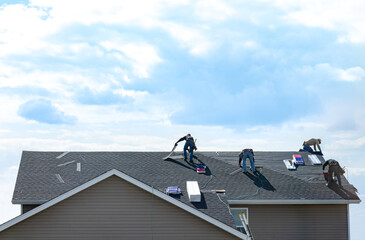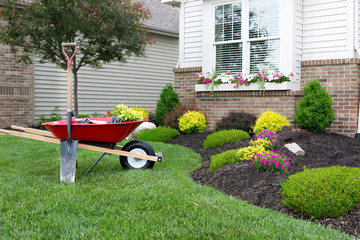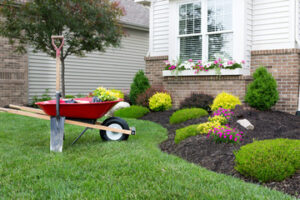AIR CONDITIONING INSTALLATION MILFORD OH requires the team to take a number of factors into account. For example, if you have a split system with an indoor and outdoor unit, the experts need to run pipes with refrigerant between them.
Good insulation and fewer west-facing windows help the home stay cool. The professionals also consider the climate zone to determine how much cooling power is needed.
If you’re thinking of taking advantage of the cool comfort that a quality air conditioning system can offer you and your family this summer, it’s important to do your homework first. Not only is there a wide range of cooling options available, but the way in which your home is designed can also play a role in how well your new AC performs.
Whether you’re looking for a small split system to keep one or two rooms comfortable or a ducted system that can cool your whole house, the first step is to talk with an experienced air conditioner installer and choose the right system for your needs. From there, you’ll need to arrange for installation.
When the air conditioning installation team arrives, they will share the full job details and equipment with you before beginning work. They will lay down drop cloths and protective equipment to keep your home clean and safe as they work, and turn off any gas supplies or electrical circuits connected to the existing system.
They’ll then begin the process of draining the old refrigerant. This is done using a recovery machine that safely removes and stores the refrigerant, keeping it out of the environment and out of harm’s way. This is an important safety measure to prevent leaks and environmental damage.
Once the technicians are confident that they have drained and removed all the old refrigerant, they’ll begin installing the indoor and outdoor units of your new system. They’ll drill holes and set up mounting brackets as they position the indoor unit, ensuring it has plenty of free space around it for airflow. They’ll then run pipes to the outdoor unit, either through the wall or up and across loft spaces – it all depends on your unique situation.
Ductwork
Ductwork is the name given to your ventilation system’s ducts. This system is responsible for two things: transporting expended air to your HVAC unit for heating or cooling and then delivering that fresh air back to your home’s rooms.
A well-fabricated ductwork system is designed to minimize energy costs and maintain good indoor air quality. In addition to minimizing energy costs, an efficient duct system will allow your HVAC equipment to operate without strain, and will provide comfort to your entire house.
The type of ductwork you choose depends on a variety of factors, including cost, noise level and durability. Generally, galvanized steel and aluminum are the most common types of metal for air ducts; fiberglass and fiberboard offer insulation and noise reduction; and vinyl offers durability.
If your ducts are not insulated, you may lose a significant amount of energy. Also, if your ducts are leaking or disconnected from the plenum or are missing seals, you could be losing air and money.
Your duct system contains both supply and return ducts, which can be made from a variety of materials. Metal ducts are the most common, but flexible ductwork is becoming increasingly popular.
Your ductwork also includes a plenum, which is the large metal box that houses your blower motor, the air handler (if you have a furnace) and the AC evaporator coil (if you have central air conditioning). There are a variety of different dampers, called take-offs, that connect or transition duct pipes to individual rooms. Some types of take-offs have specific functionalities, such as volume control dampers and smoke or fire dampers. Other types, like HETO or high efficiency take-offs, are differently shaped and function to maximize airflow downstream saving energy.
Electrical
The team will have to connect the new air conditioner with your home’s electricity. This work should be carried out by a qualified electrician.
Domestic air conditioning systems have two components, an indoor unit and an outdoor unit. There will be pipes containing refrigerant and wiring that will have to be run between these units. They will establish a route that ensures this happens, and they will turn off power to the outdoor unit before starting any electrical work.
Electricians must also consider the special needs of hermetic motor-compressor equipment that operate in a refrigerant environment. Their nameplate data includes information that simplifies the selection of the correct branch-circuit conductor size and the type and rating of the overcurrent protective device.
In addition, the Code requires that field-mounted disconnecting means be located within sight and readily accessible of air-conditioning equipment. The disconnecting means must not restrict access to panels designed for service and maintenance operations, or obscure the equipment’s nameplates.
Refrigerant
Refrigerant is the “lifeblood” of your air conditioner. It circulates through copper coils inside your home, changing from liquid to gas and back to liquid as it moves between the evaporator coil (inside) and the condenser coil (outside). This heat-transferring process allows your AC system to cool your house.
Refrigerants have very unique chemical properties that allow them to efficiently carry and expel heat. They are also able to change between liquid and gas states under pressure. This is what gives the cooling cycle its amazing efficiency. Refrigerants are usually hydrocarbons such as methane, ethane and propane but can also be synthetic or non-hydrocarbon compounds such as R-404A and R-134a. Refrigerants have a very low Global Warming Potential and Ozone Depletion Potential, making them ideal for refrigeration.
When a new HVAC unit is installed, it needs to be charged with the correct refrigerant. This is done by a licensed technician who checks the system for leaks, repairs them and then recharges the unit with the proper amount and type of refrigerant. If your air conditioning system is noisy or leaking, you should seek out an air conditioner repair company right away to avoid losing valuable refrigerant and risking serious damage to your unit and/or health hazards to your family.
Older systems use an HCFC refrigerant called R-22 (also known as Freon). This chemical is very common but is being phased out because it contains chlorine which can have negative effects on the ozone layer. The replacement for R-22 is an HCFC called R-134A which has very few environmental concerns. If your system still uses R-22, we can use a recovery machine to remove it and install the new HCFC.
Installation
The installation of a new air conditioning system is an important process. Expert technicians ensure that all the components work together as they should, delivering maximum comfort and efficiency. From pipe wiring connections to blower mounts, the technicians double-check every detail to guarantee your air conditioner operates exactly as it should and to protect your investment.
The first step is to prepare the area where the outdoor unit will go by clearing it and removing any obstacles. You should also close any windows that will be open during the installation to keep out dust and debris. The technicians will then set up mounting brackets and a protective cover for the indoor unit, if applicable. Depending on your building’s policies (or the AC manufacturer’s), they may need to install a bar inside the window to keep it from being opened too far.
Once the indoor and outdoor units are in place, the technicians will connect the copper lines that run between them. These pipes contain refrigerant, so they must be properly insulated and sealed to prevent leaks. Once they are finished, the team will test the unit and make any necessary adjustments. They will likely walk you through using your new programmable thermostat and offer tips on routine AC maintenance.
Air filtration systems are an optional part of your cooling installation that help you to protect against pollutants and allergens in the air that circulate throughout your home. They can be a great addition for homes in urban areas that are exposed to a lot of traffic-related pollution.




 Shelter is a basic human need, protecting people and assets from weather conditions. Investing in quality-engineered shelter solutions, such as DomeShelter(tm) Structures, can help ensure safety and a longer lifespan compared to cheap alternatives that may deteriorate rapidly and require frequent replacement, leading to loss of business productivity.
Shelter is a basic human need, protecting people and assets from weather conditions. Investing in quality-engineered shelter solutions, such as DomeShelter(tm) Structures, can help ensure safety and a longer lifespan compared to cheap alternatives that may deteriorate rapidly and require frequent replacement, leading to loss of business productivity.
 Incorporating eco-friendly practices in landscaping creates a healthier outdoor environment. By prioritizing soil health, sustainable landscapes reduce the need for synthetic fertilizers and support a thriving ecosystem. In addition, utilizing low-water plants and installing irrigation systems to minimize water waste helps conserve vital resources.
Incorporating eco-friendly practices in landscaping creates a healthier outdoor environment. By prioritizing soil health, sustainable landscapes reduce the need for synthetic fertilizers and support a thriving ecosystem. In addition, utilizing low-water plants and installing irrigation systems to minimize water waste helps conserve vital resources.






 rtise and innovation. The evolution of plumbing has led to significant improvements in how water is managed and distributed within residential, commercial, and industrial settings.
rtise and innovation. The evolution of plumbing has led to significant improvements in how water is managed and distributed within residential, commercial, and industrial settings.


